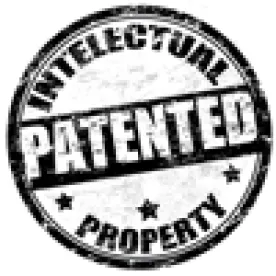In its Decision, the Board instituted review of all of the challenged claims (claims 1-11) of the ’407 Patent. The ’407 Patent is directed to a process for conducting electronic transactions, particularly “a more effective and efficient way to make a payment over the Internet.”
The Board began with claim construction, noting that the terms of the patent are given their broadest reasonable interpretation in light of the specification. The Board noted that claims 10 and 11 contain the term “receipt.” Petitioner asserted that the ’407 Patent uses the term “receipt” to cover “a request for payment” as well as “an acknowledgement that payment was received.” Patent Owner did not propose a construction. The Board reviewed the specification, and agreed with Petitioner.
The Board then reviewed whether Petitioner has standing to file a petition for covered business method review of the ’407 Patent. In order to have standing to file said petition, a petitioner must have been sued for infringement or been charged with infringement of a patent. A petitioner has been charged with infringement if a substantial controversy regarding infringement exists such that the petitioner would have standing to bring a declaratory judgment action in federal court. A party has standing to bring a declaratory judgment action if there is an affirmative act by the patentee related to the enforcement of its patent rights and meaningful preparation to conduct potentially infringing activity.
The parties disputed which facts the Board can consider in determining whether Petitioner has shown that it was charged with infringement, specifically whether information that is subject to a confidentiality agreement or that is protected from disclosure by Federal Rule of Evidence 408 may be used to support a standing argument. The Board stated that Patent Owner has the burden of showing that a confidentiality agreement exists. Patent Owner submitted proof that the parties were negotiating an agreement, and after Patent Owner sent proposed changes to the last version, Petitioner did not respond. Patent Owner argued that its last version should be the governing terms and Petitioner argued that it never agreed to a confidentiality agreement. The Board found that Patent Owner had only provided evidence that the parties agreed to keep the terms of the eBay template agreement and Patent Owner’s monetary demand confidential, and that there was no further confidentiality agreement. Regarding FRE 408, the Board noted that the rule only precludes the use of settlement negotiations “to prove or disprove the validity or amount of a disputed claim,” therefore, such evidence can be submitted to support Petitioner’s argument that it was charged with infringement.
The Board then discussed whether Petitioner has made the requisite showing of declaratory judgment standing. Petitioner included evidence showing that Patent Owner filed a lawsuit against Petitioner eBay for infringement of a related patent that was dismissed without prejudice, Patent Owner filed lawsuits against other companies asserted infringement of a related patent, the parties have been involved in several reexamination proceedings involving related patents, Patent Owner filed a lawsuit against a third-party alleging infringement of the ’407 Patent, and that the ’407 Patent and related patents have been the topic of negotiation between the parties. Patent Owner asserted that much of the evidence shows that it did not charge Petitioner with infringement of the ’407 Patent. The Board found that Petitioner had provided evidence of standing, and was specifically persuaded by a declaration accompanying the Petition stating that Patent Owner repeatedly asserted that Petitioner infringed the ’407 Patent during a meeting. Patent Owner’s history of litigation was also a factor that weighed in favor of standing.
Next, the Board discussed whether the ’407 Patent claims a financial product or service, as required for standing as a covered business method patent. Petitioner stated that the ’407 Patent is classified in Technology Class 705 (“data processing: financial, business practice, management, or cost/price determination”), and that the claims recite a financial-related process. Patent Owner argued that the claims do not by themselves recite any particular “financial product or service,” but are directed to a transaction technique that can be used in many different kinds of financial transactions. The Board was persuaded by Petitioner.
The Board then reviewed whether the ’407 Patent is directed to a technological invention, which would exclude it from covered business method review. Petitioner contended that the claims are not directed to technological inventions because they generally recite known technologies. Patent Owner alleged that the claims are directed to technological inventions. The Board agreed with Petitioner.
The Board then reviewed whether claims 1 and 3-11 are anticipated by Takayama. Patent Owner did not address the merits of the challenge, instead focusing on standing and admissibility. The Board found that Petitioner had established it was more likely than not that claims 1 and 3-9 are anticipated by Takayama, but did not do so with claims 10 and 11.
The Board then determined that it was more likely than not that claim 2 is obvious over Takayama and Neuman, claims 10 and 11 are anticipated by Sirbu, and that claims 1-9 are obvious over Sirbu and Hughes.
eBay Inc. and PayPal, Inc. v. Purple Leave, LLC, CBM2015-00051
Paper 22: Decision on Institution of Covered Business Method Patent Review
Dated: July 30, 2015
Patent 8,527,407 B1
Before: Bart A. Gerstenbligh, James A. Tartal, and Brian P. Murphy
Written by: Gerstenblith
Related Proceedings: CBM2015-00052



 />i
/>i

